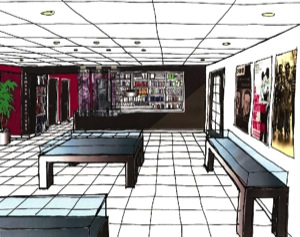
Collecting the paraphernalia of Pride parades and political protests, historical books, periodicals and pictures since 1986, the Lambda Archives of San Diego has outgrown its small corner in the Diversionary Theatre on Park Boulevard, leading the Archives’ board president, Frank Nobiletti, to sign a new long-term lease with the theatre that is set to nearly triple Lambda’s existing square footage.
All of the memorabilia and cherished LGBT collections, such as the Queer Artists Project and Lesbian History display, will be moved to the ground floor of the Diversionary Theatre, marking the first-time the Archives will have a dedicated exhibition space.
Matthew Thomason, Diversionary board president, and Nobiletti also agreed to create an opening between the theatre’s lobby and the exhibition so patrons can view the souvenirs of LGBT history before or after attending a show. The exhibition will also have its own entrance for the visiting public during off- hours.
“We look forward to making our audiences aware of the important history we have in our community, and we celebrate this new venture by the Archives,” said Thomason in a press release.
Visionary and gay activist Jess Jessop founded the Archives – previously called the Lesbian and Gay Historical Society of San Diego – to “collect, preserve and teach the history of lesbian, gay, bisexual and transgender people in the San Diego and Northern Baja California region,” according to the Archives’ website. Artifacts date back to the 1930s and houses nearly complete runs of virtually all San Diego and Tijuana LGBT periodicals that have not survived elsewhere.
“We have to make sure these things don’t get lost,” said Nobiletti. “People will forget all these things that happened 10-12 years from now.”
Nobiletti is proud of the new lease and says it is an exciting event for both the Archives and San Diego’s LGBT community.
“Because of increasing interest and support from our community,” Nobiletti said, “we are finally able to realize our founder Jess Jessop’s vision for a permanent exhibition space to allow the community greater access to its history.”










